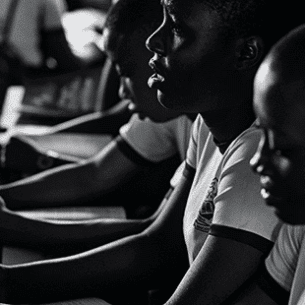Ghana was the first country in Sub-Saharan Africa to meet the Millennium Development Goal (MDG1) target of halving extreme poverty by 2015. A share of the population living in poverty decreased from 52% in 1991 to 24% in 2012. Ghana is eager to lead the way in Africa again, but this time to graduate extreme poor households, out of poverty. The current policy debates are around graduating in about three to four years some 8.4 % of households living in extreme poverty. But to what occupations?
Fortunately, Ghana has implemented social protection programs since the mid-1990s. Social protection in Ghana aims to “deliver a well-coordinated, inter-sectoral social protection system enabling people to live in dignity through income support, livelihoods empowerment and improved access to systems of basic services”. It seeks to promote the well-being of Ghanaians through an integrated platform of effective social and financial assistance, social and productive inclusion, social insurance, and access to social services.
The sector has also made some advances in building core operational systems such as the implementation of the Ghana National Household Registry (GNHR), which collects data on households with the aim of enabling their selection into a range of targeted programs. This transparent and objective process includes the introduction of electronic systems (such as e-payments and e-attendance).
The impact evaluation results from some of the flagship social protection programs include; (i) Labor Intensive Public Works (LIPW) projects decreased individual unemployment rate in the intervention communities by 15% under feeder road and small-earth dam/dugout sub-projects respectively, and 11.5% for communities, which benefited from the afforestation sub-projects during the study period; (ii) Cash transfer activities increased school enrollment among secondary school-aged children reducing grade repetition among both primary and secondary aged children.
Ghana’s labor market
Between 2005 and 2012, job creation in Ghana kept up with the increase in the working-age population. However, relative to its economic growth, the Ghanaian economy has created relatively few jobs in recent times. The labor force has grown rapidly, from approximately 6.5 million in 1993 to 11.3 million in 2014, and is expected to continue to grow in the coming decades.
The economy needs to create about 300,000 new jobs per year between now and 2020 to absorb a growing population. The employment challenge remains, both in terms of quantity and quality of jobs. The current unemployment rate in Ghana is approximately 5-6 percent (Labor Force Survey, 2015), with almost 17 percent among youth. For the extremely poor households, about 86% are engaged in less productive agriculture or self-employment activities predominantly in rural areas. Access to finance and technical know-how remain a major constraint to starting or expanding household enterprises.
Challenges and solutions
Despite these constraints, stakeholders agree that households living in extreme poverty need to graduate but to what occupations and how? Can they graduate to an occupation that guarantees better income than previously earned? “Productivity” is a common theme in this debate. Here’s how Ghana can build on existing lessons and experiences.
Provide foundational support for productive jobs among the extremely poor:
- Productivity through wages: Guaranteed employment during lean seasons on a regular basis through Labor Intensive Public Works.
- Create Productive Assets: Productive Assets (such as small dams and dugouts) improve agricultural results by providing access to irrigation and preventing environmental degradation.
- Agricultural Productivity: Link extreme poor households and beneficiaries of safety nets interventions to existing agricultural projects, sector programs, and services.
- Financial Inclusion: Link the poor to Village Savings and Loan Associations (VSLAs). Ensure that all extreme poor are enrolled in the national health insurance scheme.
Improve the quality and productivity of household enterprises:
- Productive Inclusion: Improve access to technical skills, start-up grants, improved market linkages to urban centers, as well as coaching in both agriculture and nonfarm self-employment. This will be done in partnership with private sector service providers, the National Board for Small Scale Industries, NGOs, and other relevant state and non-state actors.
- Productive Partnerships: Create links to existing income generating programs ran by non-state actors (e.g. NGOs, private sector actors).
Improve human capital investments for jobs: Promote access to health (specifically the National Health Insurance Scheme) and education to enable human capital improvements, for the next generation. Emphasize job readiness skills: These are critically important for children from extremely poor households who tend to start from a very low base.
Improve operational efficiency of the Social Protection System: Given the threat of rising spatial inequality and poverty, improved efficiency and transparency in the use of public investments in reaching the poorest must be considered. This includes efficiency in targeting (by implementing the National HouseHold Registry), payments, grievance redress, management information systems, monitoring and evaluation mechanisms, communications and advocacy, and overall administrative costs.
It is possible for households living in extreme poverty to graduate but it requires a multisectoral effort. One that guarantees financing and a strong coordination at policy and implementation levels among sector ministries, local government structures, civil society organizations and the private sector. A stronger focus on human capital investments of children from these households with a particular focus on skills for future jobs will be key.








